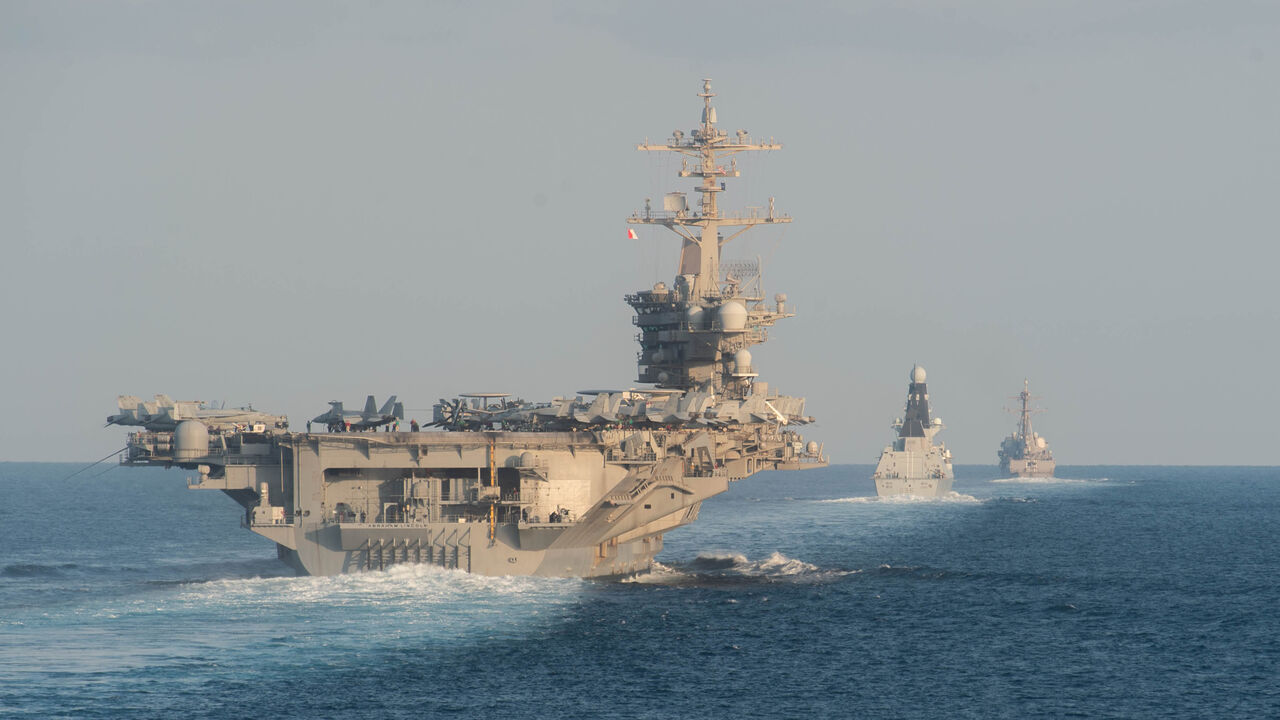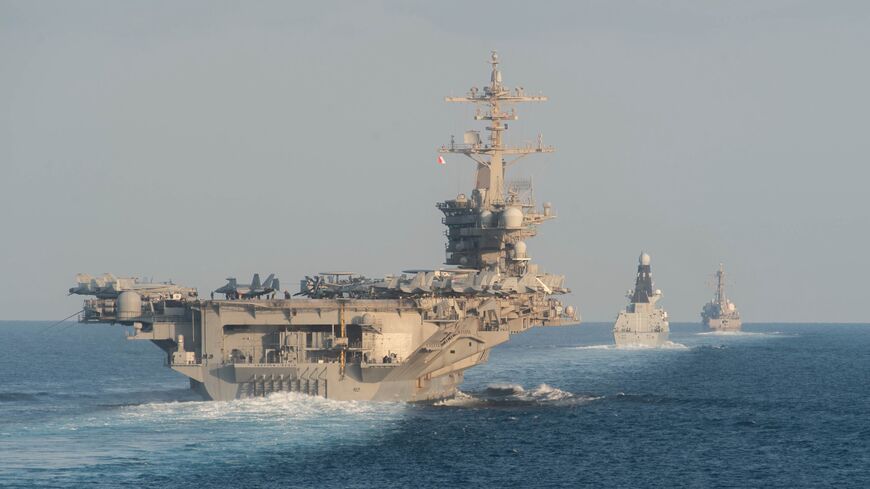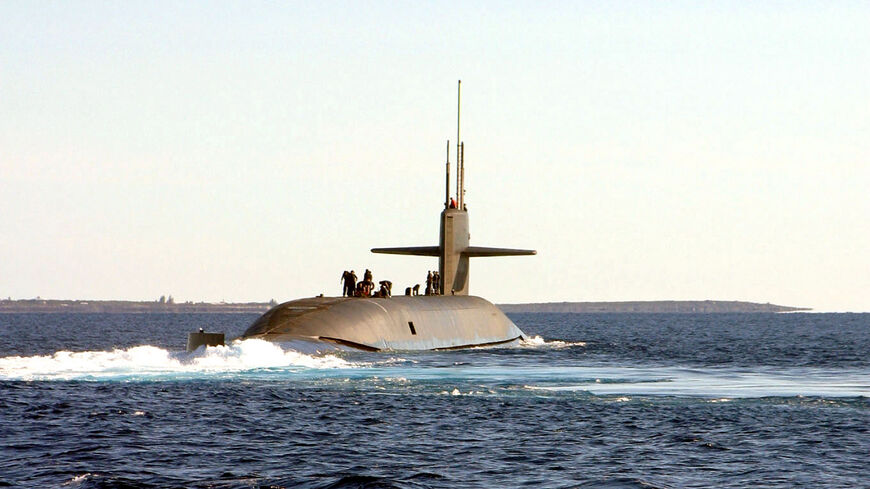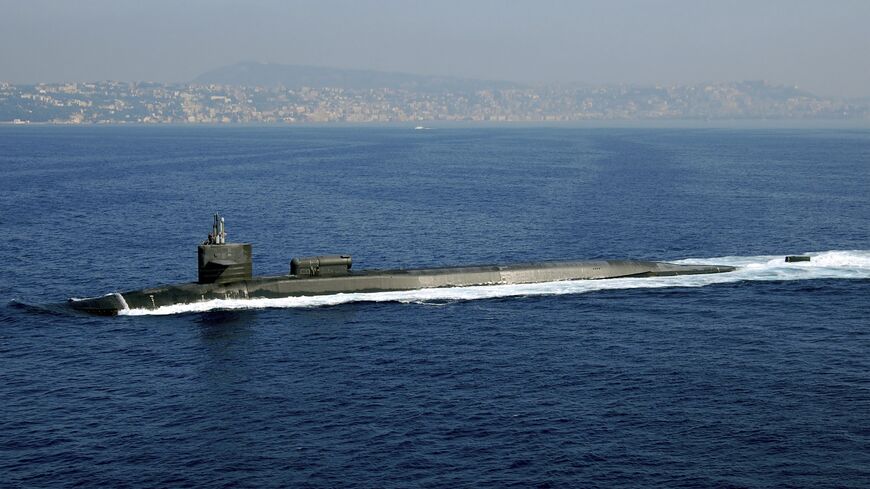Pentagon hastens naval deployment to head off Iran attack on Israel
The deployment of an Ohio-class guided missile submarine and hastening of the carrier USS Abraham Lincoln's transit comes as Iran has refused to back down on retaliating for Israel's assassination of Hamas' top political leader in Tehran.

WASHINGTON — The Pentagon has ordered the second aircraft carrier currently en route to the Middle East — the USS Abraham Lincoln — to "accelerate" its transit from the Pacific amid concerns of a looming retaliatory attack by Iran and its proxies against Israel.
US Defense Secretary Lloyd Austin told Israel's Defense Minister Yoav Gallant in a phone call on Sunday that he had ordered the Lincoln to hasten its transit while also ordering a guided-missile submarine — the USS Georgia — to the region.
The Georgia, a nuclear-powered sub capable of carrying up to 154 Tomahawk cruise missiles, is already in the Mediterranean and will head for Gulf waters.
The Lincoln strike group is carrying a squadron of F-35C stealth fighter aircraft capable of collecting intelligence and launching long-range strikes. The additional vessels will join roughly a dozen other US warships currently in broader Mediterranean and Gulf waters, in addition to those of US allies.
Israel’s military is on high alert with indications an attack by Iran and its proxies could come this week.
US intelligence has come to the same conclusion, White House National Security Council coordinator John Kirby suggested on Monday.
“We share the same concerns and expectations that our Israeli counterparts have with respect to potential timing here,” Kirby said.
An attack, he added, “could be this week,” but Kirby admitted the United States did not have clarity on timing or nature of such an attack.
“We have to be prepared for what could be a significant set of attacks,” he said.
President Joe Biden spoke with the leaders of the United Kingdom, France, Germany and Italy on Monday morning in to redouble calls for de-escalation.
Austin authorized the deployment of the Lincoln, along with additional Navy destroyers capable of intercepting ballistic missiles and super-advanced stealth F-22 fighter jets on Aug. 2.
The deployments come amid concerns in Washington that Iran and Hezbollah will launch attacks on Israel in response to the assassinations of a top Hezbollah commander — Fuad Shukr — in Beirut and of Hamas top political leader Ismail Haniyeh in Tehran earlier this month.
Israel claimed the assassination of Shukr, but has neither confirmed nor denied the killing of Haniyeh. Iranian leadership has vowed retaliation, accelerating US diplomatic efforts to achieve a cease-fire between Israel and Hamas in the Gaza Strip in a bid to alleviate tensions on multiple active fronts.
The Biden administration has pledged to defend Israel and roughly 30,000 US troops in the wider region from attack.
Kirby on Monday further said that Washington intends to send a delegation to the region to attend talks planned for Thursday in hope of brokering a ceasefire between Israel and Hamas.
Hamas has not confirmed it will send representatives, calling instead for the ceasefire terms laid out publicly by Biden in May, and subsequently enshrined in a UN Security Council resolution. In a statement released Sunday, the Palestinian militant party argued that repeated rounds of talks will only provide Israel "cover" to prolong the war in Gaza.
The continuing US naval buildup comes after Iranian officials have suggested retaliation against Israel would come regardless of whether or not a cease-fire is reached for Gaza.
It marks the largest US naval presence in the region since Israel's invasion of Gaza in response to Hamas' Oct. 7 attacks, when top Biden administration officials feared Iran's front of lethally armed militias from Lebanon to Syria to Iraq may attack Israel to relieve pressure on the Palestinian militant faction.
The deployment of nuclear-powered submarines is rarely publicized by the US military, with most of the fleet operating around the world in secret.
Press secretary Maj. Gen. Patrick Ryder on Monday hinted that the Pentagon had ordered the USS Georgia to Middle Eastern waters, rather than the submarine being sent on regular rotation.
“Absolutely we're trying to send a message,” Ryder told reporters. “We do not want to see this broaden into a wider regional conflict.”
The Pentagon has increasingly publicized its nuclear-powered sub deployments in the Middle East, sending an unsubtle warning to Iran and its proxy militias in a bid to contain the spread of a wider conflict.
Kirby on Monday declined to say whether the Biden administration had received pledges from Western allies to help defend Israel, saying he would let those countries speak for themselves.
"The president is confident that we have the capability available to us to help defend Israel should it come to that," he said.
Iran is believed to have assembled the region's largest array of armed drones, ballistic and cruise missiles, and has proliferated that weaponry to Shiite militias in Iraq, Syria, Lebanon and Yemen, heightening concerns that the self-styled "resistance front" can overwhelm the air defenses of Israel and other US-aligned states in the Middle East.
Another Ohio-class cruise missile submarine — the USS Florida — transited the Suez Canal and entered the eastern Mediterranean in November, part of the Pentagon's buildup in the region in the wake of the Oct. 7 attacks.






